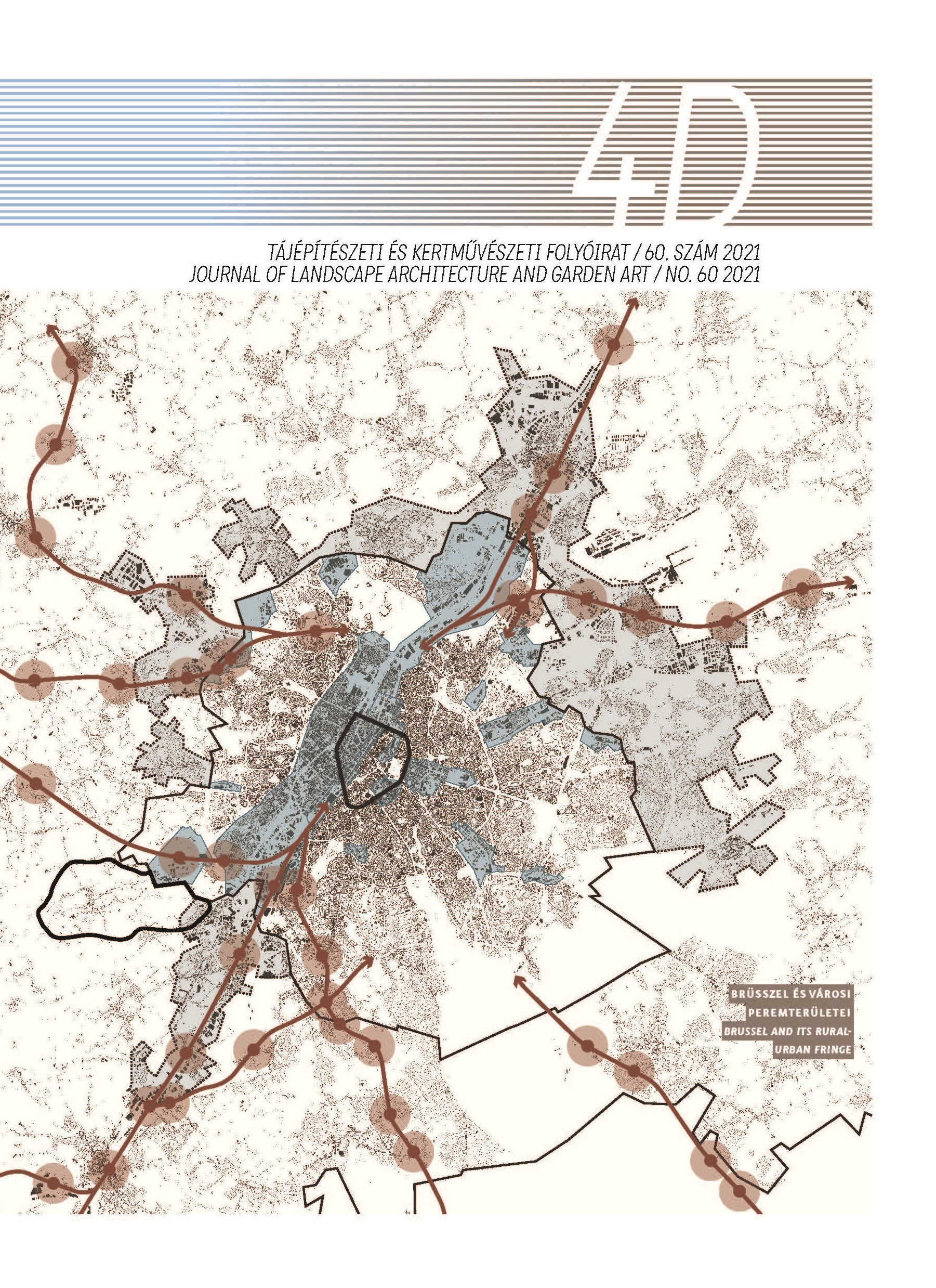At the dawn of the modern movement
a historical analysis of the Szent István park in Budapest
DOI:
https://doi.org/10.36249/60.2Keywords:
early modern garden architecture, Szent István Park, public park analysis, Károly RädeAbstract
The Szent István Park is one of the emblematic early modern gardens of Budapest in Hungary, and as such, it is one of the fairly known treasures of our capital. The modernist architecture of the park's surroundings has received increasing attention in recent years, thanks to a number of initiatives, including the Bauhaus 100 series of events. However, the park itself, as a latent entity, has not yet been able to gain the visibility it deserves, even though it is closely linked to its immediate surroundings, the modernist development of Újlipótváros. We would like to fill this gap with our two-part study on the history of this garden ensemble, in the first part with an analysis of the early development history of the Szent István Park, and in a second part with an exploration of the park's remaining values and a presentation of its potentials for a value-based development.
Our aim is to raise awareness of the park's landscape architectural and urbanistic values by providing a historical overview of its development, which will help us to understand and appreciate it. To achieve this, we will explore the impact of the interventions of the different construction periods on the park, from the original concept design, through the spatial structure and garden styles, to the compositional unity and the use of materials. Our intention is to help recognizing the park's landscape architectural significance in the professional community, thanks to an objective evaluation. On the basis of a summarised inventory of values, we will draw attention to a value-based and preservative development and renovation possibilities that can restore the park's original landscape structure. Meanwhile, bearing in mind the internal hierarchy and complex functions of the park, we aim helping to preserve or redefine as many structural elements as possible that are integral to the park's developmental history.
The two-part article follows the following methodology: in the first part, on the basis of historical research we describe the early development of the public park as a historic entity, and we describe its spatial structure, functions and certain built elements: Moreover we introduce the park’s garden architectural and artistic values around the contemporary times of its creation. In the second part, we describe the further development history of the post-World War II period, and explain the park’s alterations by providing a spatial structure analysis on the living and built elements of each construction period. We also analyse the structure of the park as a functional system, describing those elements that are still serving the ’idealised’ spatial and functional rules of the original design concept, and those which work against it. Finally, taking into account the contemporary aspects of public use, we will outline how some of the stylistically inappropriate elements that were subsequently created in the park can be modified in such a way that the historical spatial structure and the former style of the park may be restored.
References
Bächer Iván (2014): Újlipócia. Ab Ovo Kiadó: Budapest.
Benkő Melinda (2012): A pesti belváros kialakulása és fejlődése. In: Alföldi György (szerk.): Budapest 2050 – a belvárosi tömbök fennmaradásának esélyei. Budapest: Terc Kiadó, pp. 36-37.
Bogyó László (1998): Hatvan éves a XIII. kerület: helytörténeti írások. Önkormányzat XIII. Ker. Helytörténeti Klub: Budapest.
Csepely-Knorr Luca (2011): Korai modern szabadtérépítészet. A közparktervezés-elmélet fejlődése az 1930-as évek végéig. [PhD értekezés]. Budapesti Corvinus Egyetem, Tájépítészeti és Tájökológiai Doktori Iskola, Budapest. URL: http://phd.lib.uni-corvinus.hu/551/ [2021. 03. 24.]
Fonyódi Anita (2012): Város a városban - Új-Lipótváros a harmincas években, a kortársak szemében. Lipócia, 2 (1) 44-49.
Földeák János – Somogyi Gedeon (1954): Az Új-Lipótváros kiépülése 1920-1944. BUVÁTI: Budapest.
Gellért Lajos – Juhász Katalin – Pappné Vőneki Erzsébet (2012): A XIII. kerület: kezdetektől napjainkig. Sprint Kiadó: Budapest.
Halácsy Sándor (1873): Budapest fővárosnak a Duna bal partján fekvő egész területén a fővárosi közmunkák tanácsa által megállapított összes szabályozásainak átnézeti térképe. BFL XV.16.b.221/33 (1–9) [online] Budapest: Hungaricana. Maps. URL: https://maps.hungaricana.hu/hu/BFLTerkeptar/2382 [2021. 03. 24.]
Heim Ernő (1937): A Duna-parti Új-Lipótváros. Tér és forma. 10 (5) 112-115. [online] Budapest: ADT. URL: https://adt.arcanum.com/hu/view/TERESFORMA_1937/?query=Heim [2021. 03. 24.]
Jámbor Imre (2002): A mértani kert Magyarországon és Rerrich Béla működése. Tájépítészet, 3 (2), 4-8.
Körner Zsuzsa (2010): Városias beépítési formák bérház- és lakástípusok. Terc Kiadó: Budapest.
Preisich Gábor (2004): Budapest városépítésének története: Buda visszavételétől a II. világháború végéig. Terc: Budapest.
Räde Károly (1929): Budapest székesfőváros kertészetéhez tartozó park-sétány és kertek tervei, fasorok kimutatása. Budapest.
Rapaics Rajmund (1940): Magyar kertek: A kertművészet Magyarországon. Kir. M. Egyetemi Nyomda: Budapest.
Siklóssy László (1931): A Fővárosi Közmunkák Tanácsa története. Hogyan épült Budapest, 1870-1930. Fővárosi Közmunkák Tanácsa: Budapest.
Downloads
Published
Issue
Section
License
Copyright (c) 2021 Takács Katalin, Kubik Emese, Almási Balázs

This work is licensed under a Creative Commons Attribution-NonCommercial-NoDerivatives 4.0 International License.
A folyóirat Open Access (Gold). Cikkeire a Creative Commons 4.0 standard licenc alábbi típusa vonatkozik: CC-BY-NC-ND-4.0. Ennek értelmében a mű szabadon másolható, terjeszthető, bemutatható és előadható, azonban nem használható fel kereskedelmi célokra (NC), továbbá nem módosítható és nem készíthető belőle átdolgozás, származékos mű (ND). A licenc alapján a szerző vagy a jogosult által meghatározott módon fel kell tüntetni a szerző nevét és a szerzői mű címét (BY).



